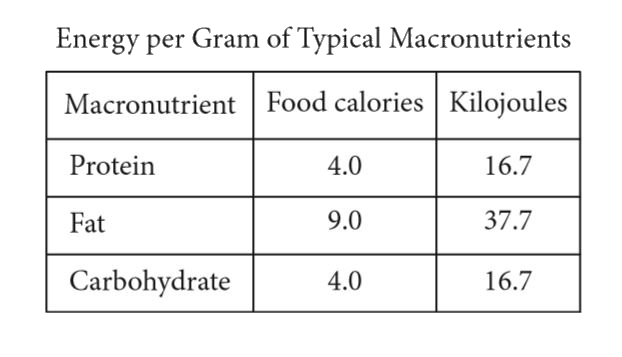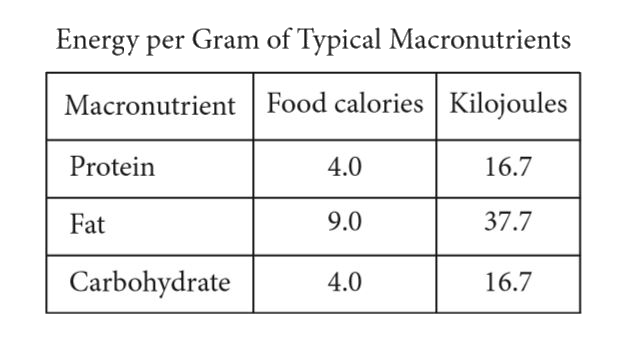What are macronutrients?
Step-by-Step Solution:
1. Definition of Nutrients:
- Nutrients are compounds found in food that are essential for life and health. They provide energy, act as building blocks for repairing body tissues, support growth, and regulate various chemical processes in the body.
2. Types of Nutrients:
- Nutrients are primarily divided into two categories: macronutrients and micronutrients.
3. Understanding Macronutrients:
- Macronutrients are the nutrients that provide a large amount of energy and are required in significant quantities by the body.
4. Examples of Macronutrients:
- The main macronutrients include:
- Carbohydrates: Provide energy and are a primary source of fuel for the body.
- Proteins: Essential for building and repairing tissues, and also serve as a secondary energy source.
- Fats: Provide a concentrated source of energy and are important for cell structure and hormone production.
- Water: While not a source of energy, it is crucial for maintaining bodily functions.
- Fibers: Important for digestive health, though not a direct energy source.
5. Comparison with Micronutrients:
- Micronutrients, in contrast, are needed in smaller amounts and include vitamins and minerals. They play vital roles in various bodily functions but do not provide energy like macronutrients.
- Nutrients are compounds found in food that are essential for life and health. They provide energy, act as building blocks for repairing body tissues, support growth, and regulate various chemical processes in the body.
- Nutrients are primarily divided into two categories: macronutrients and micronutrients.
- Macronutrients are the nutrients that provide a large amount of energy and are required in significant quantities by the body.
- The main macronutrients include:
- Carbohydrates: Provide energy and are a primary source of fuel for the body.
- Proteins: Essential for building and repairing tissues, and also serve as a secondary energy source.
- Fats: Provide a concentrated source of energy and are important for cell structure and hormone production.
- Water: While not a source of energy, it is crucial for maintaining bodily functions.
- Fibers: Important for digestive health, though not a direct energy source.
- Micronutrients, in contrast, are needed in smaller amounts and include vitamins and minerals. They play vital roles in various bodily functions but do not provide energy like macronutrients.
Topper's Solved these Questions
- MINERAL NUTRITIONBOOK - VMC MODULES ENGLISHCHAPTER - MINERAL NUTRITIONEXERCISE - ENABLE
49 Videos
- MINERAL NUTRITIONBOOK - VMC MODULES ENGLISHCHAPTER - MINERAL NUTRITIONEXERCISE - EFFICENT
50 Videos
- MINERAL NURTITION IN PLANTSBOOK - VMC MODULES ENGLISHCHAPTER - MINERAL NURTITION IN PLANTSEXERCISE - IN-CHAPTER EXERCISE-D
10 Videos
- MORPHOLOGY OF FLOWERINGPLANTS BOOK - VMC MODULES ENGLISHCHAPTER - MORPHOLOGY OF FLOWERINGPLANTS EXERCISE - IN-CHAPTER EXERCISE-G
10 Videos
Similar Questions
Knowledge Check
Which of the following are macronutrients?
ACarbon, nitrogenBOxygen, phosphorusCPotassium, sulphurDall of theseWhich of the following is not a macronutrient?
ACaBPCMnDN
In which of the following, all the three are macronutrients
View SolutionIn which of the following, all three are macronutrients
View Solution
The table above gives the typical amounts of energy per gram, expressed in both food calories and kilojoules, of the three macronutrients in food
If the 180 food calories in a granola bar come entirely from p grams of protein, f grams of fat, and c grams of carbohydrate, which of the following expresses f in terms of p and c ?
View Solution
The table above gives the typical amounts of energy per gram, expressed in both food calories and kilojoules, of the three macronutrients in food
If x food calories is equivalent to k kilojoules, of the following, which best represents the relationship between x and k ?
View SolutionWhich one of the followings plants is monoecious?
View SolutionMacronutrients are-
View Solution
